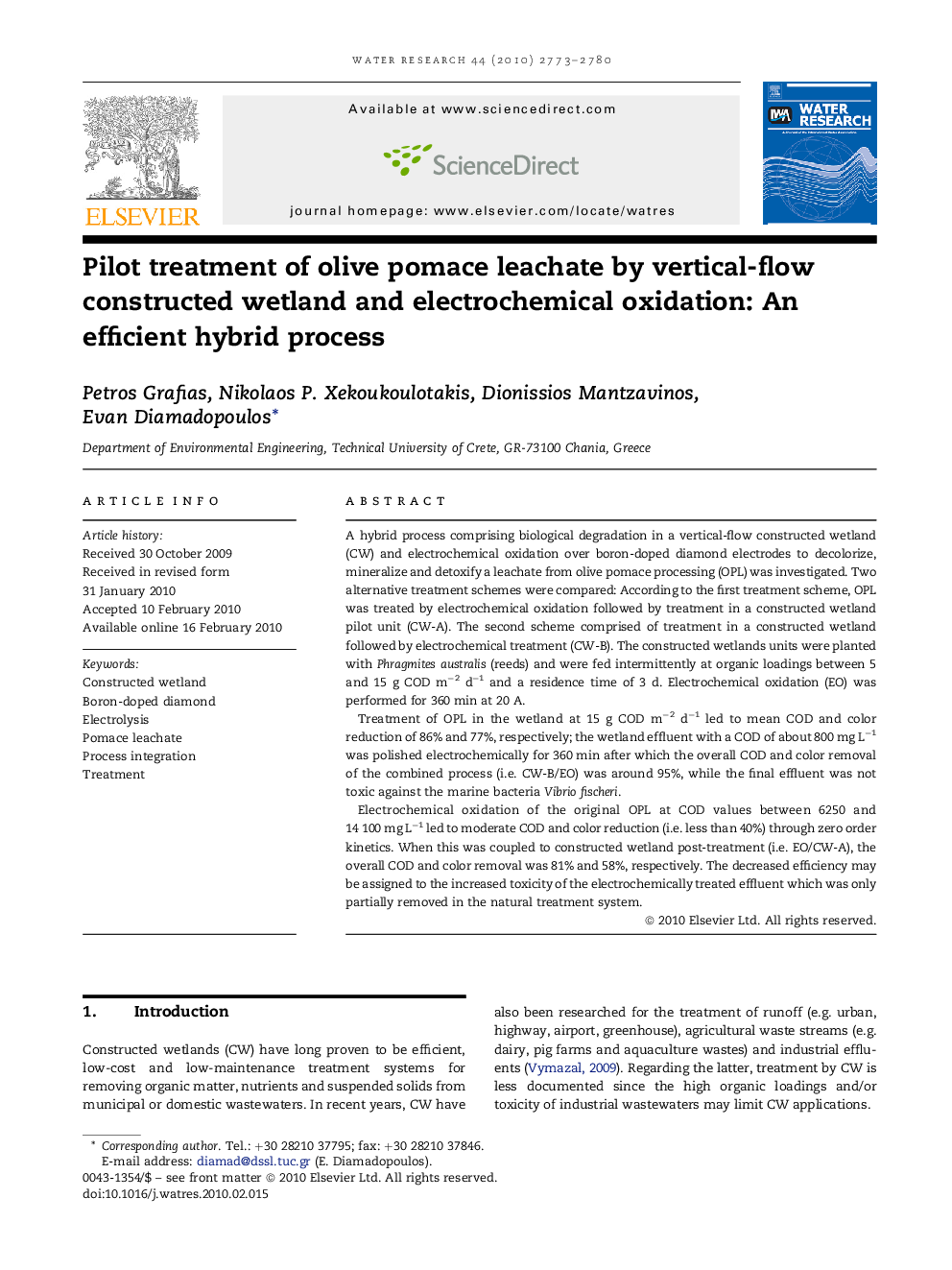| کد مقاله | کد نشریه | سال انتشار | مقاله انگلیسی | نسخه تمام متن |
|---|---|---|---|---|
| 4484214 | 1316913 | 2010 | 8 صفحه PDF | دانلود رایگان |

A hybrid process comprising biological degradation in a vertical-flow constructed wetland (CW) and electrochemical oxidation over boron-doped diamond electrodes to decolorize, mineralize and detoxify a leachate from olive pomace processing (OPL) was investigated. Two alternative treatment schemes were compared: According to the first treatment scheme, OPL was treated by electrochemical oxidation followed by treatment in a constructed wetland pilot unit (CW-A). The second scheme comprised of treatment in a constructed wetland followed by electrochemical treatment (CW-B). The constructed wetlands units were planted with Phragmites australis (reeds) and were fed intermittently at organic loadings between 5 and 15 g COD m−2 d−1 and a residence time of 3 d. Electrochemical oxidation (EO) was performed for 360 min at 20 A.Treatment of OPL in the wetland at 15 g COD m−2 d−1 led to mean COD and color reduction of 86% and 77%, respectively; the wetland effluent with a COD of about 800 mg L−1 was polished electrochemically for 360 min after which the overall COD and color removal of the combined process (i.e. CW-B/EO) was around 95%, while the final effluent was not toxic against the marine bacteria Vibrio fischeri.Electrochemical oxidation of the original OPL at COD values between 6250 and 14 100 mg L−1 led to moderate COD and color reduction (i.e. less than 40%) through zero order kinetics. When this was coupled to constructed wetland post-treatment (i.e. EO/CW-A), the overall COD and color removal was 81% and 58%, respectively. The decreased efficiency may be assigned to the increased toxicity of the electrochemically treated effluent which was only partially removed in the natural treatment system.
Journal: Water Research - Volume 44, Issue 9, May 2010, Pages 2773–2780